#panormos
Text
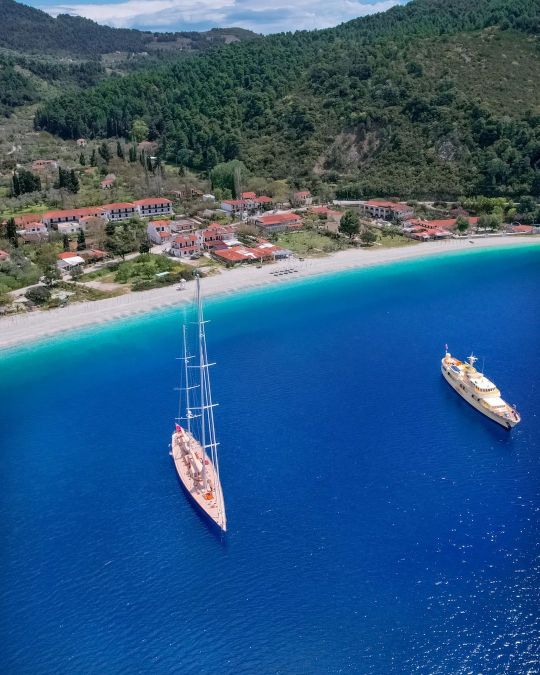
Pánormos, Skópelos island, Greece || Giannis Tsounis (Blueman)
#greece#europe#travel#landscape#beach#sea#coast#bird's eye view#skopelos#panormos#sporades#thessaly#greek islands
138 notes
·
View notes
Photo
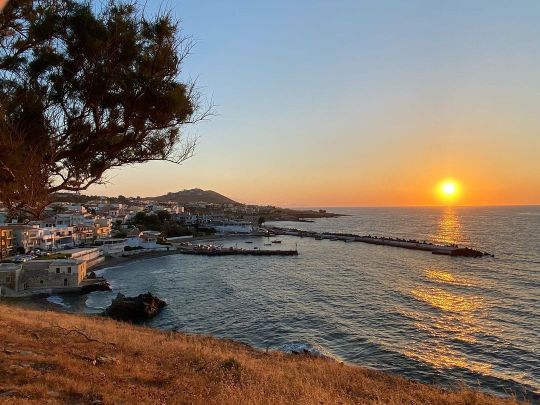
Como não amar?! #panormo #panormos #crete #creta #kreta #viagem #travel #reisen #ferias #férias #holiday #urlaub #verao #summer #sommer #pordosol #sunset #sonnenuntergang #beach #praia #strand #semfiltro #nofilter (at Pánormos, Rethimni, Greece) https://www.instagram.com/p/Cfhos9St_A5/?igshid=NGJjMDIxMWI=
#panormo#panormos#crete#creta#kreta#viagem#travel#reisen#ferias#férias#holiday#urlaub#verao#summer#sommer#pordosol#sunset#sonnenuntergang#beach#praia#strand#semfiltro#nofilter
5 notes
·
View notes
Text

Panormos Greece
#tinos#cyclades#Panormos#greece#bay#blue#travel#water#sea#island#cycladic#house#tinosisland#cycladesislands#greek#aegean#sky#tourism#vacation#coast#european#beach#europe#boat#fishing#photography#art#interiors#painting#relax
0 notes
Photo

Throwback to #panormos #crete #yearsago on #vacation (at Pánormos, Rethimni, Greece) https://www.instagram.com/p/ChpQTp-NO7D/?igshid=NGJjMDIxMWI=
0 notes
Text
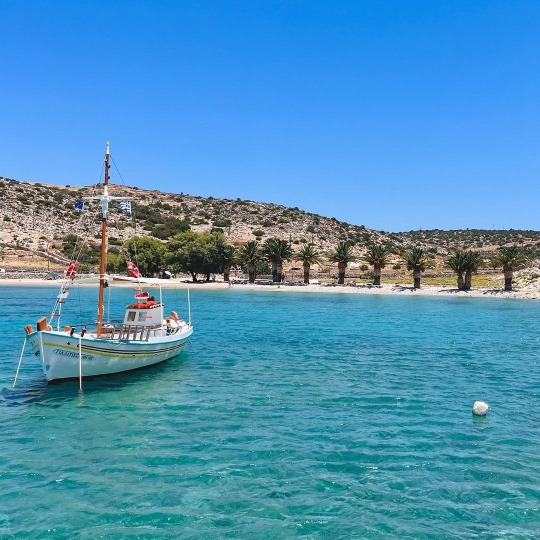

Who wants Palm trees for natural shade on the beach?? 🌴🌴
This is the exotic beach of Panormos in 📍Naxos island (Νάξος) - @cyclades-islands
📸 by: https://www.instagram.com/p/Cuhq0WgsmRt/?igshid=MzRlODBiNWFlZA==
#cyclades#greece#travel#summer#cyclades_islands#κυκλαδες#ελλαδα#aegeansea#visitgreece#greeksummer#naxos island#Naxos Greece#naxos#palm trees#palm trees Naxos#panormos beach Naxos#Cyclades greece#explore cyclades
28 notes
·
View notes
Text
The Collection of Cats Mundemar Panormos Cares For
• [x] shifts in number
• [x] keeps vermin away
• [x] scatters and hides when startled
• [x] loves and appreciates Mundemar Panormos
• [x] doesn’t go hungry
5 notes
·
View notes
Text

Panormos Quarry, Tinos
2023
Chris Kontos
155 notes
·
View notes
Text
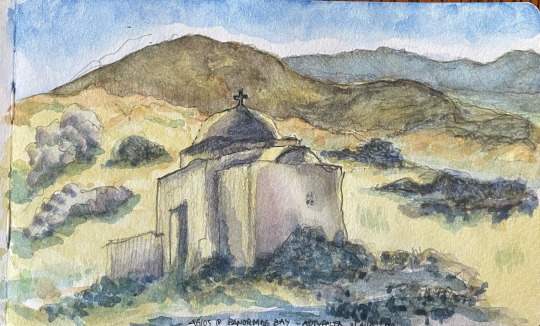
Ag. Panormos, Panormos Bay , 2 yrs later
7 notes
·
View notes
Text
Saints&Reading: Sunday, February 18, 2024
february 5_february 18
The sunday of Zacchaeus

The paschal season of the Church is preceded by the season of Great Lent, which is also preceded by its own liturgical preparation. The first sign of the approach of Great Lent comes five Sundays before its beginning. On this Sunday the Gospel reading is about Zacchaeus the tax-collector. It tells how Christ brought salvation to the sinful man, and how his life was changed simply because he “sought to see who Jesus was” (Luke 19:3). The desire and effort to see Jesus begins the entire movement through Lent towards Pascha. It is the first movement of salvation.
Our lenten journey begins with a recognition of our own sinfulness, just as Zacchaeus recognized his. He promised to make restitution by giving half of his wealth to the poor, and by paying to those he had falsely accused four times as much as they had lost. In this, he went beyond the requirements of the Law (Ex. 22:3-12).
The example of Zacchaeus teaches us that we should turn away from our sins, and atone for them. The real proof of our sorrow and repentance is not just a verbal apology, but when we correct ourselves and try to make amends for the consequences of our evil actions.
We are also assured of God’s mercy and compassion by Christ’s words to Zacchaeus, “Today salvation has come to this house” (Luke 19:9). After the Great Doxology and Trisagion at Sunday Matins (when the Tone of the week is in Tone 1, 3, 5, or 7) we sing the Troparion of the Resurrection: “Today salvation is come to the world, let us sing praises to Him Who arose from the tomb, and is the Author of our life. For having destroyed death by death, He has given us the victory and great mercy.”
Zacchaeus was short, so he climbed a tree in order to see the Lord. All of us have sinned and come short of the glory of God (Rom. 3:23). We are also short in our spiritual stature, therefore we must climb the ladder of the virtues. In other words, we must prepare for spiritual effort and growth.
Saint Zacchaeus is also commemorated on April 20.
THE HOLY MARTYR AGATHA of PALERMO ( 251)
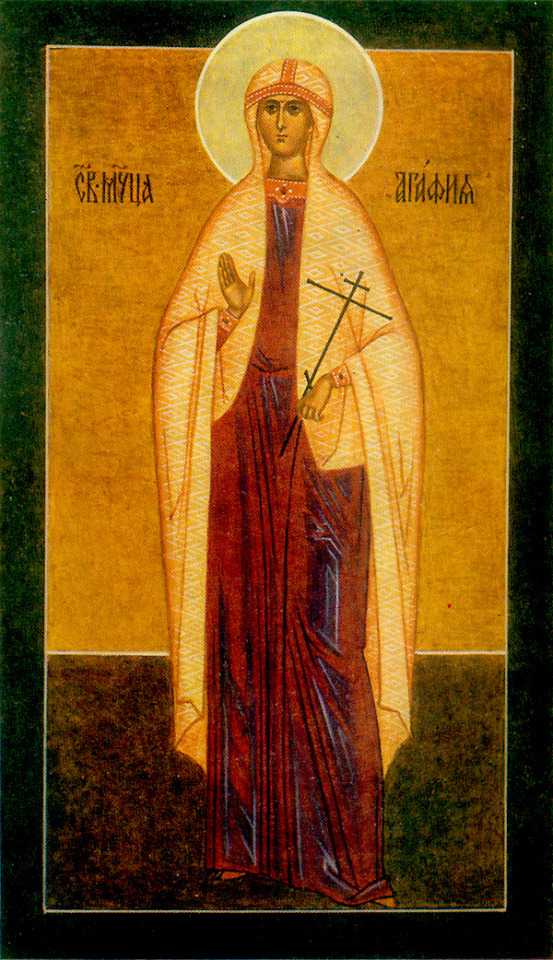
The Holy Virgin Martyr Agatha was the fifteen-year-old daughter of rich and respected Christian parents from the city of Palermo (formerly Panormos) in Sicily. During the persecution under the emperor Decius (249-251), the city prefect of Catania, Quintianus, having heard about Agatha’s wealth and beauty, sent his soldiers after her to bring her to trial as a Christian.
At Catania they housed the saint with a certain rich woman, who had five daughters. They all attempted to tempt Saint Agatha with fine clothes, amusements and entertainment, urging her to offer sacrifice to the pagan gods, but the saint disdained all these things. The more they tried to move her, the more resolute she became. She prayed that she might soon face martyrdom.
During her interrogation under Quintianus, the holy martyr was swayed neither by the flattery, nor by the threats, and she was subjected to cruel torments. They also tried to remove her breasts with metal tongs, and when this failed, they used knives.
The holy Apostle Peter appeared to her in prison and healed her wounds. Saint Agatha was led to torture again, and Quintianus was astonished to see her completely healed, with no trace of cutting. Then the torture began once more.
At this moment an earthquake took place in the city, and many buildings were destroyed. Among those killed were two of Quintianus’s advisors. The terrified inhabitants rushed to Quintianus, demanding an end to Agatha’s tortures. Fearing a revolt by the people, Quintianus sent Saint Agatha back to prison. There the martyr, offering thanks to God, peacefully surrendered her soul to the Lord.
SAINT THEODOSIUS, ARCHBISHOP OF CHERNIGOV (1696)

Saint Theodosius, Archbishop of Chernigov, was born in the seventeenth century at the beginning of the decade of the thirties in Podolsk governance. He was descended from a noble family, the Polonitsky-Uglitskys. His parents were the priest Nikḗtas and Maria. The saint was taught Christian piety in his parents’ home, and this piety remained with him throughout his life.
From childhood he was distinguished by a fervent love for God and zeal for the Church. The innate abilities of the youth came to light in the Kiev Brotherhood school at Kiev’s Theophany monastery. The school was flourishing at the end of the 1640s, when its rectors were Archimandrite Innocent (Gizel), and Igumen Lazar (Baranovich), who later became Archbishop of Chernigov. Among its instructors were: Hieromonk Epiphanius (Slavinetsky), Hieromonk Arsenius (Satanovsky), Bishop Theodosius (Baevsky) of Belorus, Igumen Theodosius (Saphonovich) and Meletius Dzik. These were the enlightened men of those days. The comrades of Saint Theodosius at the school would become future outstanding pastors: Simeon Polotsky, Joannicius Golyatovsky, Anthony Radivillovsky, Barlaam Yasninsky. The Kiev Brotherhood Theophany school was the chief center in the struggle of Orthodoxy against the assaults of Catholic clergy, particularly the Jesuits.
Saint Theodosius grew to spiritual maturity near the relics of Saints Anthony and Theodosius and other God-pleasers of the Kiev Caves, and he tried to imitate their holy life as much as he could. He devoted all his free time to prayer, meditation on God, and the reading of Holy Scripture.
It might be surmised that the saint did not finish the full course of studies, since the school ceased its activity for several years following the devastation of Podolia by the Poles. All his life the saint had a deep regard for the Kiev Brotherhood monastery where he was educated. In the Synodikon of the Kiev-Vydubitsk monastery is the following comment about Saint Theodosius: “He was a man of fine intellect, and generous to the Kiev Brotherhood monastery.”
Upon receiving his education, the future hierarch received monastic tonsure at the Kiev Caves Lavra with the name Theodosius, in honor of Saint Theodosius of the Caves (May 3).
Metropolitan Dionysius (Balaban) of Kiev made him archdeacon of Kiev’s cathedral of Holy Wisdom (Hagia Sophia) , and then appointed him steward of the episcopal household. Soon he left Kiev and went to the distant Krupitsky monastery near Baturino (in the Chernigov diocese), which was famed for its strict monastic life. There he was ordained to the holy priesthood, but remained there only a short time.
In 1662, Saint Theodosius was appointed Igumen of the Korsun monastery in Kiev diocese, and in the year 1664 he was made head of the ancient Kiev-Vydubitsky monastery. This monastery had fallen into the hands of the Uniates and Poles at the beginning of the seventeenth century and was in complete ruin. Thanks to the energy and initiative of Saint Theodosius, the Vydubitsky Mikhailovsk monastery was quickly restored.
He was particularly concerned with the order of church services. He formed an excellent choir, which was famed not only in Little Russia, but also in Moscow. Saint Theodosius sent his singers to Moscow in 1685 to instruct their choirs in Kievan chant.
As a strict ascetic himself, Saint Theodosius was concerned with the spiritual growth of his monks. He founded a small skete on the island of Mikhailovschina, not far from the monastery, for brethren wishing to live in solitude. He appointed the hieromonk Job (Opalinsky), one of the most zealous monks of his monastery, to organize and administer the skete.
Saint Theodosius had to live through some quite difficult days, enduring many sorrows. He and other Igumens were accused by Bishop Methodius of Mstislav and Orshansk of betraying Russia in a supposed correspondence with the enemies of Russia.
On September 20, 1668 Saint Theodosius explained the matter. On November 17, 1668 the lie was exposed, and Saint Theodosius together with the other Igumens were vindicated. Archbishop Lazar (Baranovich) esteemed the high spiritual qualities of Saint Theodosius and befriended him. He called him “a sheep of the flock of Christ, teaching by humility,” and he prophetically expressed the wish that the name of Saint Theodosius might be inscribed in Heaven.
When Archbishop Lazar became locum tenens of Kiev’s Metropolitan See in 1689, he appointed Saint Theodosius as his vicar in Kiev, while he remained at Chernigov. In his capacity as vicar of the locum tenens of the Kiev Metropolitan See, Saint Theodosius had an active role in many churchly events. In 1685 he participated with the right of a decisive vote in the election of Bishop Gideon (Chetverinsky) as Metropolitan of Kiev, and he was sent to Moscow with news of this event with Igumen Jerome (Dubin) of Pereyaslavl . In Moscow, both representatives were received with honor and esteem. Indeed, the result of this delegation was the reuniting of the Kiev Metropolitan See with the Russian Orthodox Church.
In 1688 Saint Theodosius was appointed archimandrite of Chernigov’s Eletsy monastery, replacing the deceased Archimandrite Joannicius (Golyatovsky). In appointing Saint Theodosius, Archbishop Lazar told him to spare no effort in placing the Eletsy monastery in good order. This monastery had not yet been set aright after the expulsion of the Jesuits and Dominicans, and it was in great disorder.
Through the efforts of Saint Theodosius, in his two or three years as igumen, the monastery’s revenues and properties increased, the church of the Dormition was repaired, and the Elets Icon (February 5) was enshrined there.
In his new position, the saint also assisted Archbishop Lazar in many important matters. He participated in drafting a conciliar reply to Patriarch Joachim of Moscow in response to his questions about the attitude of the Kiev Metropolitan See to the Council of Florence, and its judgment on the question of the transformation of the Holy Gifts as accepted by this Florentine Council. When the Patriarch proved to be unsatisfied by these answers, the Baturino Igumen Saint Demetrius (the future Metropolitan of Rostov) was sent to him at the beginning of 1689. Saint Theodosius journeyed with him as the representative of Archbishop Lazar. He was entrusted with the delivery of a letter to the Patriarch, and to clear up the misunderstandings.
Because of his poor health, Archbishop Lazar wished to see Saint Theodosius consecrated to the episcopate, seeing in the saint a worthy successor to himself. On September 11, 1692 the election of Saint Theodosius as Archbishop of Chernigov was confirmed, and he was consecrated in the Dormition cathdral of the Moscow Kremlin two days later.
Little information regarding Saint Theodosius’s administration of the Chernigov diocese has been preserved. The saint worked incessantly to raise the level of true Christian piety in his flock. He also focused on maintaining old monasteries, and founding new communities.
At the very beginning of his episcopate, the the Pecheniksk women’s monastery was established with his blessing, and he himself consecrated the monastery church in honor of the Dormition of the Most Holy Theotokos.
In 1694, a skete was founded near Liubech. The same year, at the Domnitsky men’s monastery, the saint consecrated a temple in honor of the Nativity of the Most Holy Theotokos. In the summer of 1695, he consecrated a majestic temple in honor of the Most Holy Theotokos, on the summit of Boldino Hill, near the ancient monastery of Saint Elias. Under Saint Theodosius there was a special enthusiasm for and strengthening of monasticism in the Chernigov diocese.
The saint also devoted much attention to the clergy, and he tried to choose worthy candidates for the priesthood. He also encouraged the pastoral education of the Chernigov clergy. He invited learned monks from Kiev, among whom was Saint John (Maximovitch), the future Metropolitan of Tobolsk (June 10), and also a helper and successor of Saint Theodosius in organizing the Chernigov clergy school.
Strict uprightness in regard to clergy and flock, deep compassion, concern and Christian love of peace were distinguishing features in the activity of Saint Theodosius. Not only did the Orthodox turn to him for help and advice, but even persons of other confessions.
Saint Theodosius did not remain with his Chernigov flock very long. Sensing the approach of death, he summoned the administrator of the Briansk Svensk monastery, Saint John (Maximovitch), and appointed him Archimandrite of the Chernigov Elets monastery.
Saint Theodosius died on February 5, 1696, and was buried in Chernigov’s Saints Boris and Gleb cathedral church, in a special crypt near the right cleros. His successor Saint John (Maximovitch), who was healed of a grievous illness by Saint Theodosius, later placed a stone plaque over his grave with a poetic inscription in gratitude for the saint’s help. The special grace which Saint Theodosius attained is shown by his ascetic life and his assistance to all who turn to him in prayer.
The glorification of Saint Theodosius occurred on September 9, 1896.
Source: Orthodox Church in America_OCA

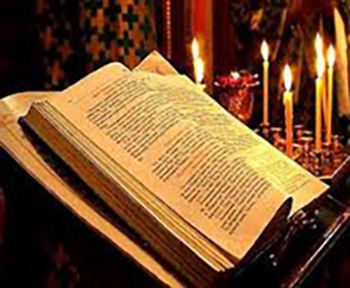
1 TIMOTHY 4:9-15
9 This is a faithful saying and worthy of all acceptance. 10 For to this end we both labor and suffer reproach, because we trust in the living God, who is the Savior of all men, especially of those who believe. 11 These things command and teach. 12 Let no one despise your youth, but be an example to the believers in word, in conduct, in love, in spirit, in faith, in purity. 13 Till I come, give attention to reading, to exhortation, to doctrine. 14 Do not neglect the gift that is in you, which was given to you by prophecy with the laying on of the hands of the eldership. 15 Meditate on these things; give yourself entirely to them, that your progress may be evident to all.
LUKE 19:1-10
1 Then Jesus entered and passed through Jericho. 2 Now behold, there was a man named Zacchaeus who was a chief tax collector, and he was rich. 3 And he sought to see who Jesus was, but could not because of the crowd, for he was of short stature. 4 So he ran ahead and climbed up into a sycamore tree to see Him, for He was going to pass that way. 5 And when Jesus came to the place, He looked up and saw him, and said to him, "Zacchaeus, make haste and come down, for today I must stay at your house." 6 So he made haste and came down, and received Him joyfully. 7 But when they saw it, they all complained, saying, "He has gone to be a guest with a man who is a sinner." 8 Then Zacchaeus stood and said to the Lord, "Look, Lord, I give half of my goods to the poor; and if I have taken anything from anyone by false accusation, I restore fourfold." 9 And Jesus said to him, "Today salvation has come to this house, because he also is a son of Abraham; 10 for the Son of Man has come to seek and to save that which was lost.
#orthodoxy#orthodoxchristianity#easternorthodoxchurch#originofchristianity#spirituality#holyscriptures#gospel#bible#wisdom#saints
3 notes
·
View notes
Text
i played a little bit of bass
the thing that's been awesome at taiji practice is that we also practice doing things wrong intentionally so that we don't do them wrong by accident. anyway, here's a bit of intentionally wrong bass playing
(the bass is a 2009 Jay Haide Panormo l'Ancienne that i bought in 2013 and played through my studies at University of Arts Helsinki; it's tuned a fourth above normal tuning, strings: Evah Pirazzi. the bow is an okayish carbon fiber stick, last rehaired before my illness in 2017.)
12 notes
·
View notes
Text

Στη νοτιοανατολική πλευρά της Νάξου θα βρείτε την πανέμορφη παραλία Πάνερμος ή Πάνορμος. Με καταγάλανα νερά, φυσική σκιά και υπέροχη θέα προς τα Κουφονήσια, η παραλία αυτή σίγουρα θα σας ενθουσιάσει. Από την παραλία αυτή ξεκινάει ένα μονοπάτι με σήμανση που καταλήγει στα λείψανα της προϊστορικής ακρόπολης των Αμυγδαλιών.
Έχετε επισκεφθεί ποτέ την Νάξο; Ποια είναι η αγαπημένη σας παραλία;
Για περισσότερες πληροφορίες σχετικά με μερικές από τις καλύτερες παραλίες της Μεσογείου επισκεφθείτε το www.naxos.gr
#naxosandsmallcyclades#SmallCyclades#Naxos#naxosisland#Greece#Aegean#visitgreece#greekislands#aegeansea#cyclades_island#travelgreece#lovegreece#island#travel_greece#perfect_greece#Νάξος#Ελλάδα#beach#panermos#panormos
#ναξος#ελλάδα#smallcyclades#naxosisland#village#lovegreece#greece#visitgreece#naxos#naxosandsmallcyclades#panermos
6 notes
·
View notes
Photo
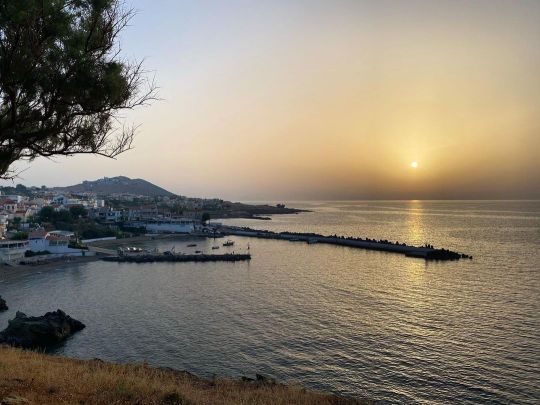
Porque a gente a não cansa desta vista. #panormo #panormos #crete #creta #kreta #sumer #sommer #verao #viagem #travel #reisen #ferias #férias #holiday #urlaub #semfiltro #nofilter #pordosol #sunset #sonnenuntergang #beach #strand #praia (em Pánormos, Rethimni, Greece) https://www.instagram.com/p/CfKaHh_tjjW/?igshid=NGJjMDIxMWI=
#panormo#panormos#crete#creta#kreta#sumer#sommer#verao#viagem#travel#reisen#ferias#férias#holiday#urlaub#semfiltro#nofilter#pordosol#sunset#sonnenuntergang#beach#strand#praia
3 notes
·
View notes
Text
Last Day in Naxos
We decided to make our last day in the islands a beach day. We drove to Panormos Beach which is at the end of the road in the south eastern most corner of the island.
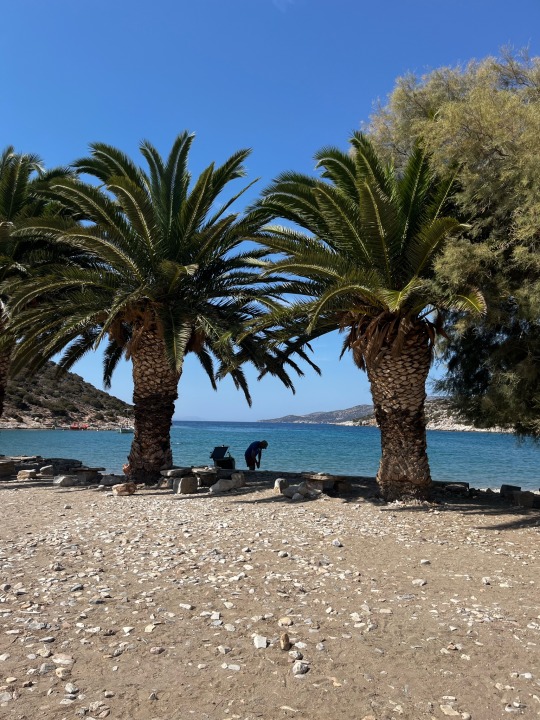
Palm trees were a new twist. There were also the usual hemlocks under which we found the perfect shady spot.

A water taxi from up the coast arrived to this tiny dock while we were there. It brought about twenty people and that was as crowded as the beach ever got.
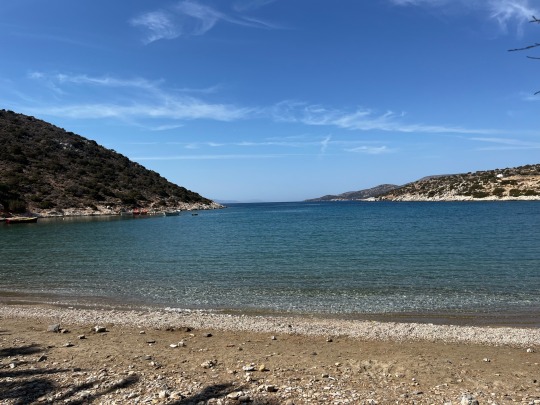
Sandy beach and very calm water. It was the best swimming beach we have visited in Greece.
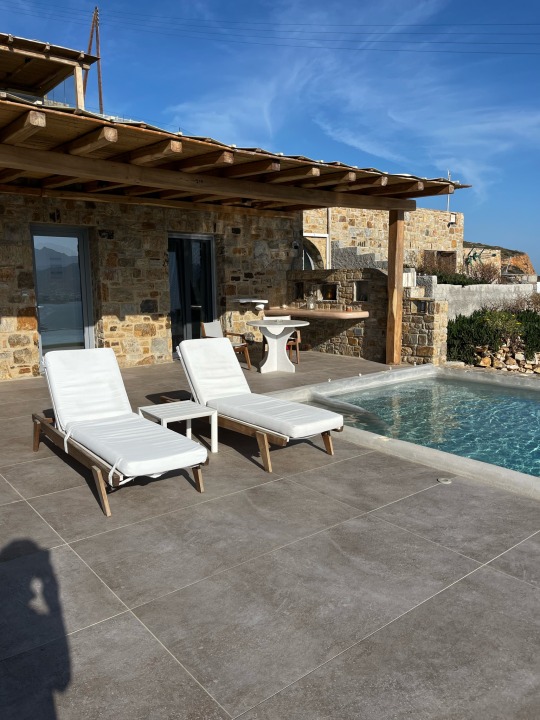
Now we are relaxing on our patio at Naxos Rock Villas….

….enjoying the view. The pool water is very chilly!
Back to Athens tomorrow.
2 notes
·
View notes
Text
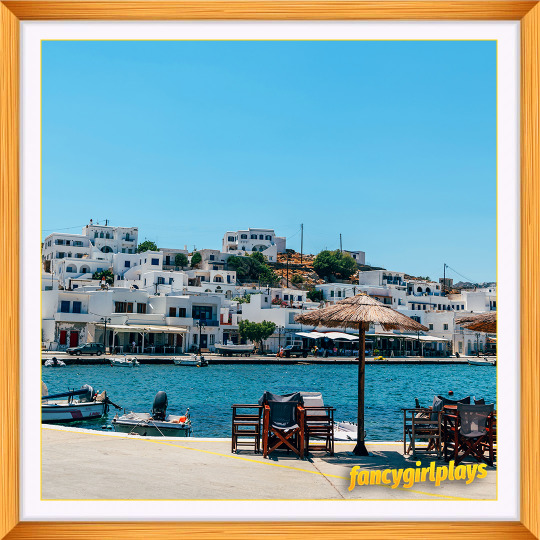
#tinos#cyclades#Panormos#greece#bay#blue#travel#water#sea#island#cycladic#house#tinosisland#cycladesislands#greek#aegean#sky#tourism#vacation#coast#european#beach#europe#boat#fishing#nature#music#photography#art#interiors
1 note
·
View note
Text
Aubry Maire ~1850

Aubry-Maire ~1850 - rare romantic guitar from France
Joseph Aubry (1801–1867) was a luthier in Mirecourt (France). He most probably married a “Miss Maire” and subsequently built guitars under the hyphenated name of Aubry-Maire (using a hyphenated brand name arising from a marriage or joint venture was a common practice in Mirecourt).
Joseph Aubry was a contemporary of Rene Lacote.
His instruments were highly regarded because his work was precise, his materials were of high quality and his inlay work showed great artistic accomplishment.
This nice guitar can be dated to the time around 1850. It has the typical makers stamp reading "Aubry-Maire" and an importers label "Louis Grunewald - New Orleans".
The body style is similar to Panormo's guitars. It is lightly built and has a unique construction with lightly arched top and back. “Built under Tension” was the descriptive phrase for that type of construction.
The top of the guitar is of spruce. The sides of rosewood. The back seams to be some sort of laminated construction, which we often see on romantic guitars. The scale length is 626 mm and the nut width 50 mm.
The guitar sounds nice and immediately impresses with a very sweet tone. The basses are deep and the trebles are smooth, lively and colourful with great expressiveness.
Due to its age and its light weight, the soundis woody, with an ample amount of tonal modulation and dynamic range. This guitar produces sweet tones, whith a lot of charme.
When the guitar came to us it was in pretty rough shape, with lots of repairs (more or less professionally done).
Our luthier gave it a good amount of restoration work to bring it back to life. The guitar plays very nicely with a low action and a straight neck.
Read the full article
2 notes
·
View notes
